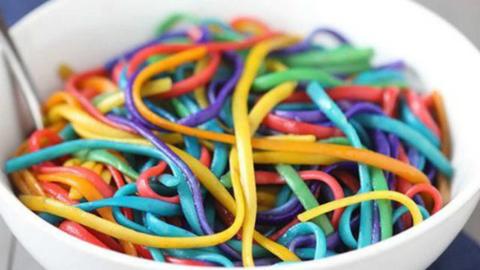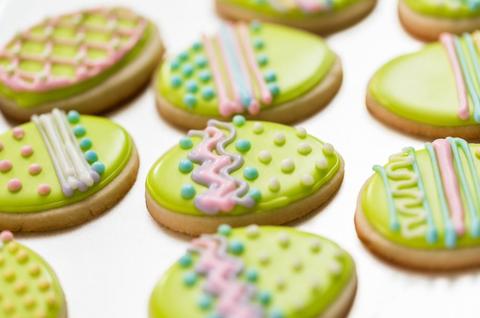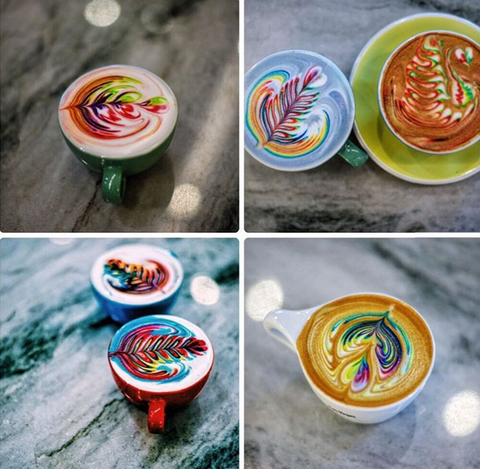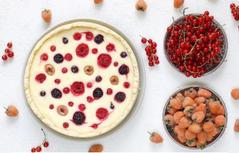by Sharanya Munsi
Children get attracted to all things colourful, be it clothes, sketch pens or food. The Rainbow Foods trend, that has strikingly taken up the fascination of children and adults alike, does more than just let your digestive system sit on unicorn coloured food, it often harms in invisible ways. For kids, the negative effect on their health is due to the use of a wide range of food colours and dyes that lead to accumulation of chemical toxins in the body. Experts agree that colourful food or rainbow foods are best kept at arm’s length despite their appeal to our taste buds and imagination.
|
What’s In Your Food: 5 Harmful Food Additives You Should Be Avoiding |
The allure of rainbow food offerings like rainbow pasta or rainbow grilled cheese of rainbow lattes may be high but do keep in mind that they are often bestowed with high levels of food colours and dyes. The burst of colours on the plate may feel like a new experience yet behind their glimmer lie concoctions of multiple dyes and colours that can be easily avoided from the already chemical-heavy food items consumed by children.

Photo courtesy of hexjam.com
How prevalent is food colour in regular food?
While Rainbow foods are upfront about the use of food colours and dyes in their cooking process, parents are often unaware of the use of colours in varying degrees in regular food items too. Processed food items often add colour to the raw ingredients to make the food further appealing. Some of the common items to use food colours are candies, frosting, macaroni, cereals, sports drinks, yoghurt, ice cream, syrup, peanut butter, certain bread, cakes, pastries and others.

How does rainbow foods or other food items with added colour affect children?
Experts argue that added food colours due to their inherent artificial composition can have devastating effects on a child’s growth when consumed through food items recurrently over a long period of time. Sugar-based food products are the most common items to use food dyes and colours that makes them doubly harmful for children. It is sited that it can lead to hyperactivity, behavioural changes in children as well as influence hives and asthma. In some extreme cases, it can even trigger tumour growth as three of the primary food dyes contain benzene which is known to be cancer-causing.

Photo courtesy of @ibrewcoffee on Instagram
Best way to avoid colour dyes in your child’s food
Here’s a look at some of the tried and tested ways to prevent added food colours from landing up on your kid’s plate:
1. Opt for homemade brands or small scale trusted establishments for regular items like bread, jam, dairy and others.
2. Before picking an item that will be eaten by your child, spend some time and scrutinise the label for added colours in the ingredient section. Food safety rules make it mandatory for all food manufacturers to declare any artificial colouring.
3. Seeks out ways to incorporate wholefoods into your child’s diet. They go a long way in ensuring the meal being served is wholesome and filled with nutrition.
When considering healthy rainbow food ideas you can always borrow a page from Mother Nature to create natural food dyes. Some of the easiest food dyes that are au natural and excellent supplements for your child are strawberries, beets, saffron, turmeric, spinach, blueberries, cocoa and others.
Healthy rainbow food recipe ideas for children
While store-bought rainbow coloured food items are a threat to your child’s health, it need not always be the case when the rainbow theme is incorporated more cleverly while cooking. Rainbow food recipes can range from a colourful fruit bowl to a lively custard bowl with sprinkles of colourful fruits to a kebab platter of vibrant juicy food items. Make use of nature’s colours to create a rainbow platter for your child during mealtime.
|
Summer Special Banana Powder Recipe For Toddlers – Fruit Custard |
Naturally coloured rainbow savoury and sweet pancakes:
Ingredients:
For savory version:
1. ½ Cup Slurrp Farm Protein-Rich Millet Dosa Mix Spinach
2. ½ Cup Slurrp Farm Multigrain Millet Dosa Mix Beetroot
3. ¼ Cup grated carrots
4. ½ cup red cabbage soaked in baking soda and water
5. 2 Strands of saffron soaked in milk
6. Baking soda
7. Butter
8. Salt
For Sweet version:
1. Cup Slurrp Farm Classic Millet Pancake
2. 1/2 Cup of milk
4. One Eggs
5. ½ Cup of brown sugar
6. 2 Strands of saffron soaked in milk
7. Baking soda
8. Butter
Method:
For savory version:
1. For the savoury version, add the dosa batter and mixes in different small bowls, dividing them equally.
2. Whisk the bowls to create the batter. The spinach and beetroot mixes will naturally become green and red. In the other non-coloured bowls, add 1 tbsp of yellow saffron milk, 1bsp of the blanched blue liquid from red cabbage and the grated carrots respectively to the bowls.
3. On a flat skillet, melt butter and fry the dosas one color at a time till they turn fluffy and crispy respectively.
4. Assemble all the colors by stacking them one on top of the other with a butter square for the savoury version.
For the sweet version:
1. In a large bowl whisk together milk, eggs and brown sugar. Create the pancake batter and make sure it’s not too watery.
2. On a flat skillet, melt butter and fry the pancakes till they turn fluffy and crispy respectively.
3. You can also drizzle golden syrup.


